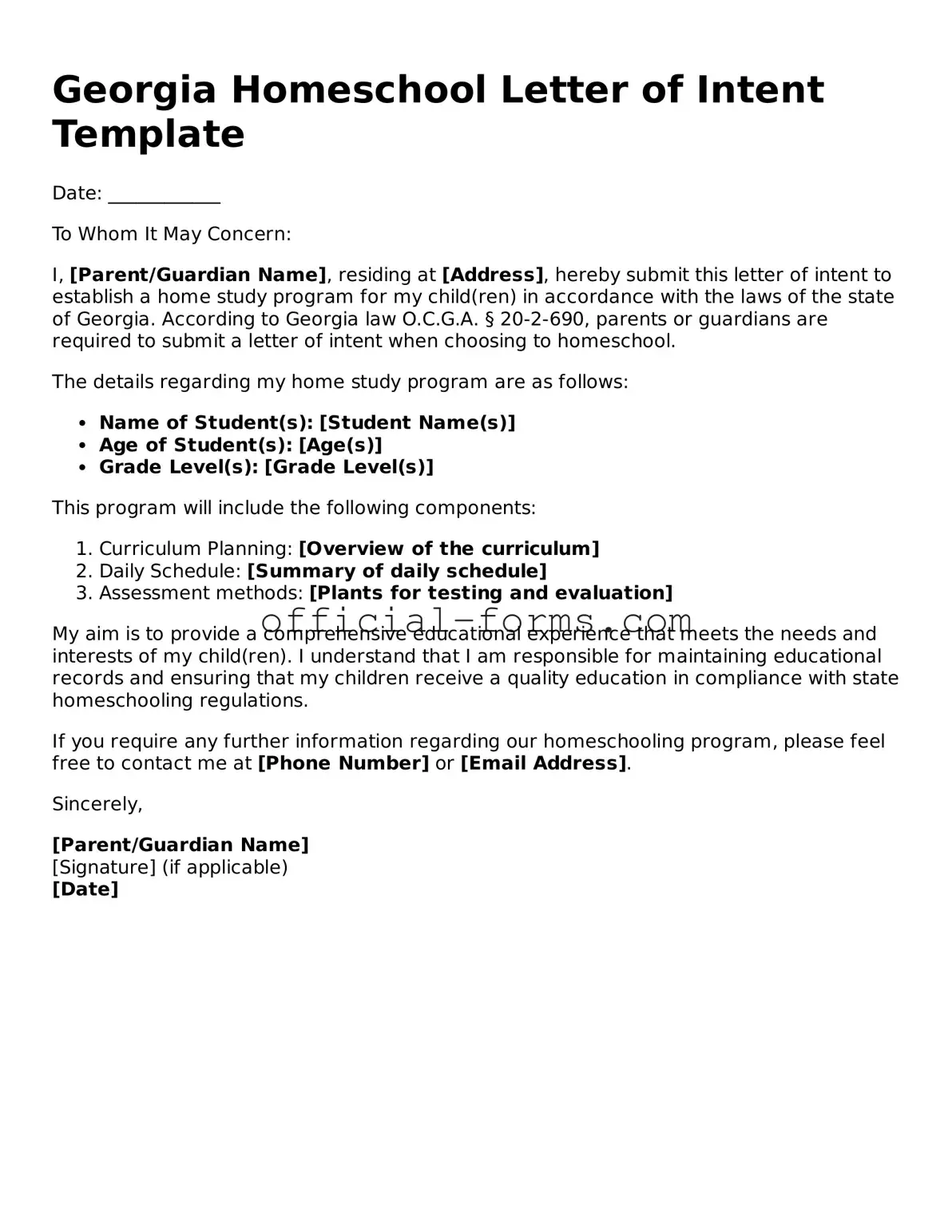Completing the Georgia Homeschool Letter of Intent form can be straightforward, yet many families encounter pitfalls that can lead to complications. One common mistake is failing to provide all required information. The form requires specific details about the student, such as their name, age, and grade level. Omitting even one piece of information can delay the processing of your intent.
Another frequent error is not submitting the form within the designated timeframe. Georgia law mandates that the letter must be filed within 30 days of beginning the homeschool program. If this deadline is missed, families may face unnecessary stress or even legal repercussions.
Some individuals mistakenly believe that the form is optional. In Georgia, submitting the Letter of Intent is a legal requirement for families who choose to homeschool. Neglecting to file can result in the loss of homeschooling privileges and complications with local school authorities.
Inaccurate information is another issue that can arise. For instance, providing incorrect dates or misspelling names can lead to confusion. It is crucial to double-check all entries for accuracy before submission. Mistakes of this nature can cause delays or require resubmission of the form.
Additionally, some families overlook the importance of keeping a copy of the submitted form. Having a record of your submission is essential for future reference. This document may be needed to verify your homeschooling status or to address any potential questions from educational authorities.
Another common oversight is not updating the form when necessary. If there are changes in the student's status, such as a change in grade level or address, the form should be updated accordingly. Failing to do so can create misunderstandings regarding the family's homeschooling situation.
Lastly, many people neglect to familiarize themselves with the specific requirements of their local school district. Different districts may have varying interpretations of the law or additional requirements. Researching these local guidelines can help prevent misunderstandings and ensure compliance with all regulations.
